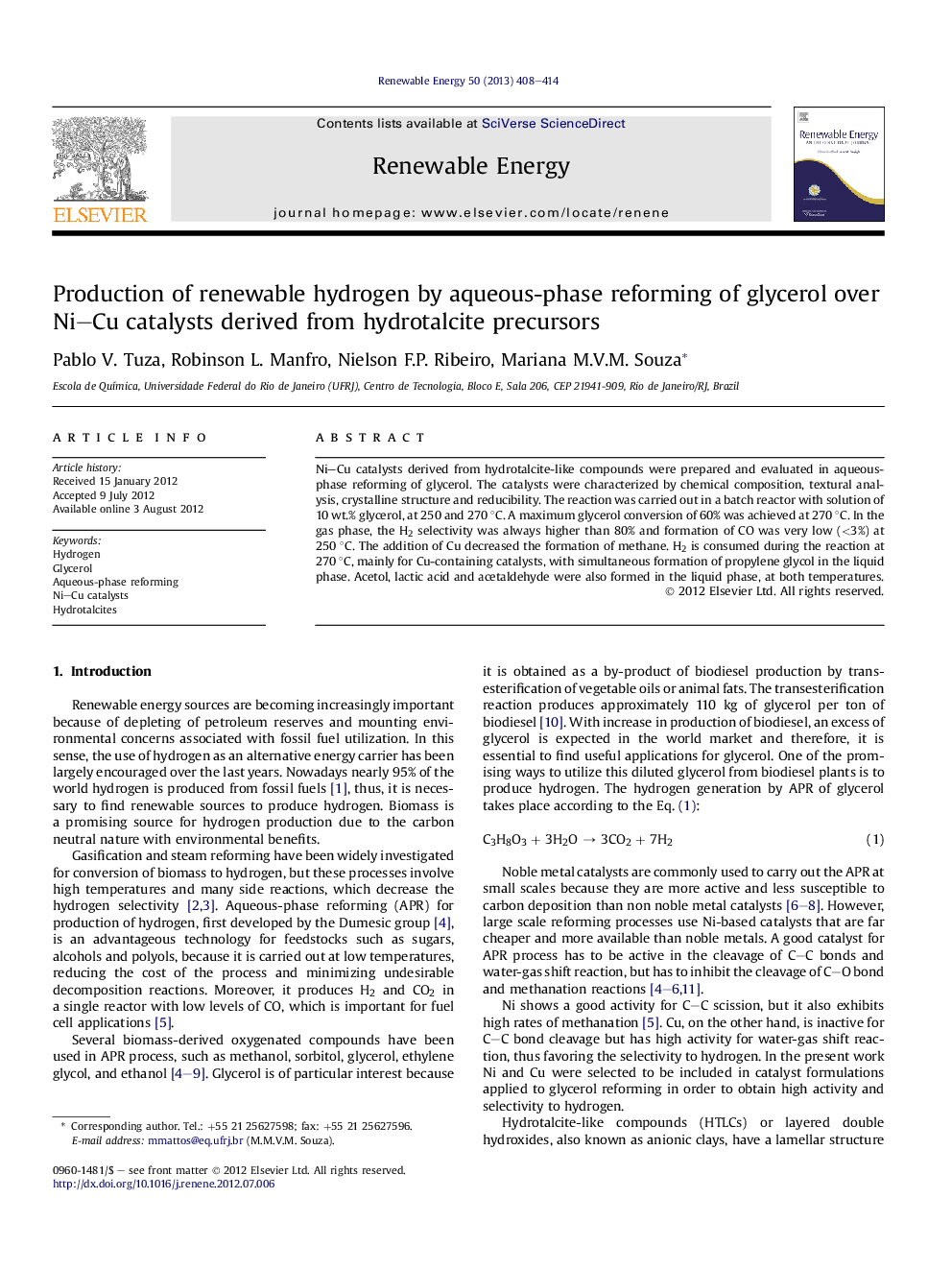| Article ID | Journal | Published Year | Pages | File Type |
|---|---|---|---|---|
| 300391 | Renewable Energy | 2013 | 7 Pages |
Ni–Cu catalysts derived from hydrotalcite-like compounds were prepared and evaluated in aqueous-phase reforming of glycerol. The catalysts were characterized by chemical composition, textural analysis, crystalline structure and reducibility. The reaction was carried out in a batch reactor with solution of 10 wt.% glycerol, at 250 and 270 °C. A maximum glycerol conversion of 60% was achieved at 270 °C. In the gas phase, the H2 selectivity was always higher than 80% and formation of CO was very low (<3%) at 250 °C. The addition of Cu decreased the formation of methane. H2 is consumed during the reaction at 270 °C, mainly for Cu-containing catalysts, with simultaneous formation of propylene glycol in the liquid phase. Acetol, lactic acid and acetaldehyde were also formed in the liquid phase, at both temperatures.
► The aqueous-phase reforming of glycerol was carried out in a batch reactor at 250 and 270 °C. ► The catalyst with 5% of Cu showed high H2 selectivity at 250 °C. ► At 270 °C there is consumption of H2 with time due to hydrogenolysis of glycerol. ► The main reaction routes were proposed, considering liquid by-products.
